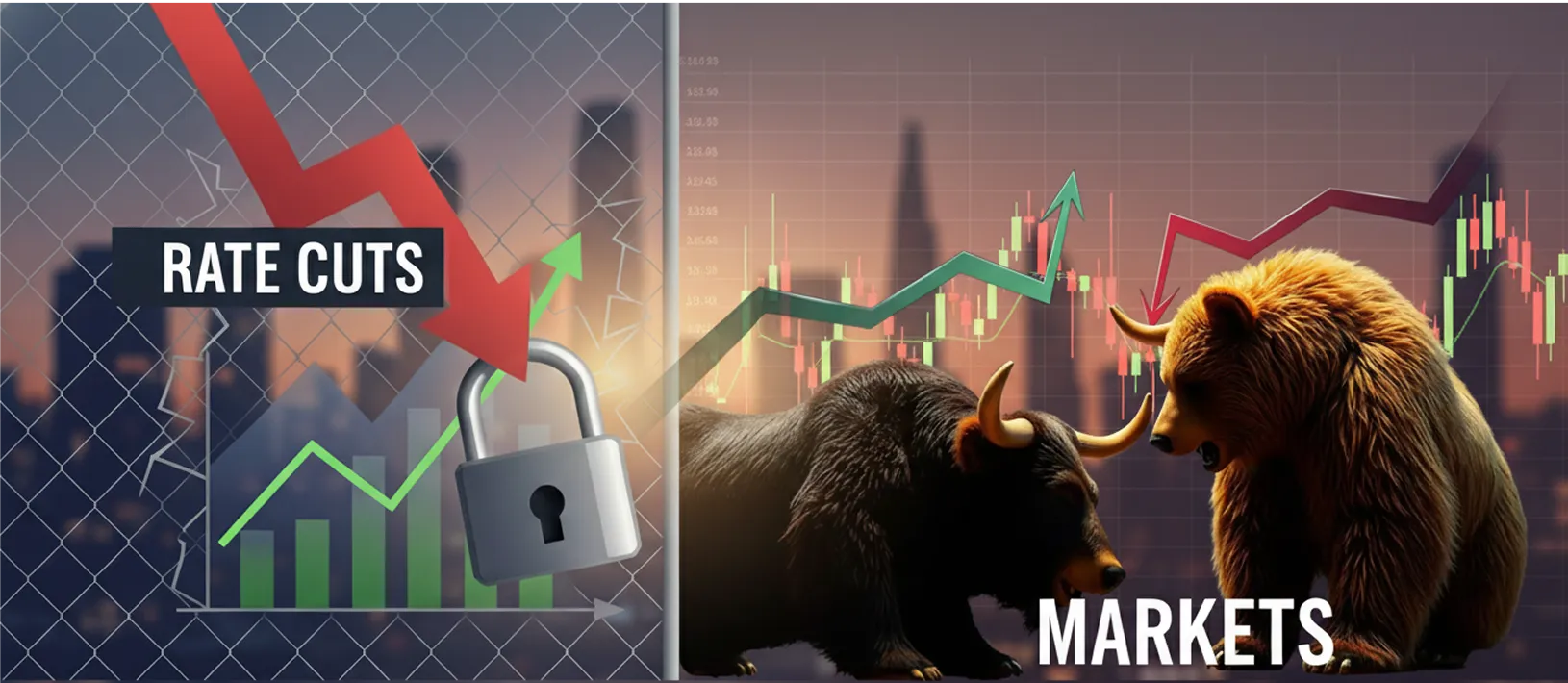In the last decade or so, whenever central banks have communicated or even provided guidance about rate cuts, the stock and bond markets have reacted positively. As a matter of fact, recession or economic slowdown meant markets cheering in anticipation of central banks’ being forced to cut rates. Economist coined this QE (Quantitative Easing). However, this QE driven party is now getting over. Recently, bond yields have been rising despite central banks cutting rates and this has become a global phenomenon.
On 17th September, 2025 the US Federal Reserve cut its key interest rates by 0.25 percentage points – resuming its rate cuts after an eight-month pause. Federal Open Market Committee (FOMC) members also indicated two more rate cuts totalling 50 basis points in the next few months. But, what did we experience? The US bond markets remained cold with yields staying high. India’s Monetary Policy Committee (MPC) has cut its repo rates by 50 basis points since June 2025 and has maintained largely a dovish stance (which prioritizes economic growth and employment, preferring to lower interest rates to stimulate the economy). But the 10-year government bond yield has risen from 6.1% to 6.53% in the last four months. This defies logic to say the least.
The stock market has also not reacted to rate cut news. The Indian indices have been rangebound and we are witnessing time correction since the all-time high levels seen in September 2024. The resumption of Fed rate cuts has also not lifted US stocks much. This is wake-up call for investors. Let’s try to decipher why this is happening.
Following factors can be arguably considered as to why bond yields are increasing in the middle of interest rate cut cycle:
- Despite the dovish tone by MPC, bond market reckons that the current rate cut cycle is close to its end. If we look back at the past, repo rates in India have seldom dipped below 5% (the Covid low of 4% was truly an exceptional event). There’s good reason for this. Interest rates in the economy need to yield a real return over inflation. CPI inflation in India has seldom stayed below 5-6% for an extended period of time. Though inflation has been below 3% for a few months now, no one believes that this is a sustainable trend.
- For some time now, it has been clear that the world’s leading economies’ debt situation is getting worse. When lenders get worried about the ability of an entity to repay, they shy away from extending long-term loans. This has been happening with government bonds from the US, UK, France, Germany and other heavily indebted nations. Ater recent sell-offs, yields on 10- to 30-year bonds in advanced economies are trading at decadal highs. It is this worry, partly, which has sent gold prices rocketing.
Now, India is much better placed in this regard with debt-to-GDP ratio at a moderate 83%. The current Indian government which has been in power for more than a decade now has shown great fiscal prudence and has been diligently reducing its fiscal deficit. India recently earned a rating upgrade from the global credit rating agencies. However, keeping these positives aside when differentials narrow between bond yields in emerging economies (EE) and those in ‘advanced’ ones, foreign investors tend to sell bonds in the EE. Therefore, when bond yields rise in the US, UK or Europe, yields in India also tend to increase. The opening up of Indian bond markets to Foreign Portfolio Investors (FPIs) has increased such inter-linkages.
- For central banks to cut rates, they need clear signs that inflation is under control and that growth is moderating. Today, we cannot confidently say anything about inflation and growth rates of the economy. In India’s case, a surplus South-West monsoon has moderated food prices, but US trade negotiations remain a big uncertainty. If US tariffs stay in place in some form, they can be inflationary. Therefore, the probability of a rate cut in the near future is bleak. And RBI has frontloaded rate cut cycle in the CY2025 and will wait to see its impact to fully play out.
Why Stocks didn’t rise?
Rate cuts by the MPC have not impressed stock markets either. Why is this the case? While domestic investors remain bullish as ever with DIIs receiving positive flows, Foreign Portfolio Investors (FPIs) have been consistently selling Indian equities. The recent underperformance of INR vis-à-vis. its emerging peers is also not helping in this regard. Indian stock valuations are looking pricey as earnings growth is slowing sharply after post-Covid euphoria. The MSCI India Index is trading at a valuation of about 22-23 times while the EM index trades at 13-15 times.
The benefits of policy rate cuts are not fully reflecting in the corporate earnings, consumption in the economy or capex intentions of the government and private sector as of now. FPIs are likely to wait for signs of a sustained recovery in GDP growth (which can happen owing to income tax and GST cuts) and for a revival in earnings growth before raising their allocations to India. MPC actions in isolation may not do the trick.
To summarize, with central banks having limited ammunition to control bond yields for now, the demand and supply of securities in the bond market will be the key. Perhaps, the government’s fiscal situation is now more important than MPC actions.
.png)











.svg)
.webp)
.svg)
.svg)
.svg)
.svg)